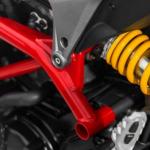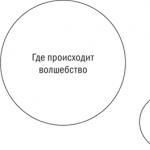To improve the mechanical qualities and performance characteristics of polypropylene pipes, reinforcement is used. The reinforced polypropylene pipe retains all the positive qualities of a plastic product and acquires additional advantages - rigidity, resistance to temperature and pressure. Reinforce polypropylene with fiberglass or aluminum. Each type of pipe has its own advantages, subtleties of installation, and operating features.
Polypropylene is an organic polymer that is used to make safe, cheap (compared to metal) pipes with a long service life. A significant disadvantage of pipelines made of simple polypropylene is their sagging and deformation with an increase in the temperature of the transported liquid.
The second quality of polypropylene, which creates problems in the operation of pipelines, is their linear (in length) expansion during operation in heating or hot water supply. Pipe extension reaches 10 cm per 1 linear meter and requires the installation of compensators.
With open installation, this worsens the aesthetics, adds cost. When closed, the circulation of the pipeline can cause the destruction of the plaster.
Reinforcement is the addition of a material reinforcing polypropylene to the pipe wall: aluminum or fiberglass.

Reinforcement of plastic materials with fiberglass is the latest development in this area and takes into account the disadvantages of metal reinforcement. An additional inner layer stabilizes the ductile organics, making the pipes more durable.
Reinforced plastic pipelines approach the capabilities of metal pipelines, while retaining all the advantages of an organic polymer.
Reinforced polypropylene pipe has the following qualities:
- remains inert to chemical attack;
- does not emit harmful substances, suitable for use in the food industry;
- retains the smoothness of the inner wall, does not “overgrow” with precipitation and scale;
- are dielectrics, have low noise and thermal conductivity;
- has a price lower than metal products;
- is light in weight, easy to transport;
- the coefficient of linear expansion is reduced by 5 times in comparison with conventional polypropylene;
- withstands more significant temperature and power loads;
- remains available for self-assembly.
The heating system is a very important component in the improvement of any room in the cold season. If earlier metal pipes were used when distributing the system, now, thanks to new technologies, most people use new types of pipes for this purpose. Polypropylene turned out to be a worthy replacement for metal, it meets higher requirements than the usual plumbing material for us.
Polypropylene
Currently, a lot of polypropylene products are produced in the world. The polymer belongs to thermoplastics, according to the production conditions, it is very similar to low-density polyethylene, but they have different properties. Polypropylene pipes have the following technical characteristics:
- Density - 0.91 g / cm 3;
- High resistance and hardness to abrasion;
- Tensile strength 250-350;
- Not subject to corrosion cracking;
- The temperature for melting is +175 o C, at +140 o C it begins to deform.
Ordinary polypropylene pipes have one drawback - they have a large coefficient of thermal expansion. When the polypropylene system is heated, changes in volume occur and make it difficult to perform installation work.
 This problem was solved by reinforcing polypropylene. It was necessary to include in the structure low expansion material. Fiberglass-reinforced products, according to masters, have become the best material option today, which has the lowest expansion coefficient.
This problem was solved by reinforcing polypropylene. It was necessary to include in the structure low expansion material. Fiberglass-reinforced products, according to masters, have become the best material option today, which has the lowest expansion coefficient.
The reinforced pipe has a triple layer, the outer and inner are made of polypropylene, and fiberglass middle layer. Its use made it possible to produce durable products, because polypropylene pipes reinforced with fiberglass are in no way inferior to aluminum, and their installation is very simple and fast.
 Products reinforced with fiberglass are of excellent quality and provide more comfortable operation of the heating system. Each product has its own marking, it is indicated PPR-FB-PPR, in the people they were nicknamed fiberglass. Fiberglass comes in different colors, but this does not play a role in the technical and operational characteristics of products.
Products reinforced with fiberglass are of excellent quality and provide more comfortable operation of the heating system. Each product has its own marking, it is indicated PPR-FB-PPR, in the people they were nicknamed fiberglass. Fiberglass comes in different colors, but this does not play a role in the technical and operational characteristics of products.
Polypropylene glass fiber pipes can also be easily joined by socket welding. They do not need to be pre-processed, and this simplifies the installation process, makes it fast in time. The integral structure of polypropylene pipes allows them not to delaminate.
Main advantages
Polypropylene pipes reinforced with fiberglass for heating have many positive qualities, including:

Types of pipes reinforced with fiberglass
Almost all types of glass fiber reinforced polypropylene pipes are produced with a small diameter, since a larger diameter will not be able to create the necessary pressure in the heating system. For example, products with a diameter of 32 mm are suitable for risers, and for tying batteries and wiring - 20 and 25 mm. All products are marked, which always facilitates the purchase of polypropylene products of the desired diameter.
In hardware stores you can find pipes with markings from the manufacturer.
 PPR - universal view, the features of the pipes include resistance to high temperatures, pressure and strength, so they are suitable for creating a heating system.
PPR - universal view, the features of the pipes include resistance to high temperatures, pressure and strength, so they are suitable for creating a heating system.
PPR-FB-PPR - glass fiber reinforced, the layer of which is located between the inner and outer coating of the pipe.
The strength of the products is also marked, for example, reinforced pipes of the PN 20 brand are suitable for heating. The number in the marking indicates what maximum pressure the system can withstand in kg / cm 3. Such products are suitable for use in heating and air conditioning systems, in the creation of external drinking and technical water supply.
Brand of polypropylene products PN 20 is durable and flexible, in severe frosts, they do not burst from freezing, and when the water begins to thaw, they retain all their properties. Fiberglass-reinforced pipes have also found application in agriculture, they are used in the construction of irrigation drainage systems, in the disposal of soil and waste water.
The longitudinal strip that is on the products indicates their intended purpose for operation in certain conditions. So, red color indicates suitability in a hot environment, blue - for a cold one, both stripes together - the versatility of the material.
Application features
 A material such as polypropylene has a high oxygen permeability, and at elevated temperatures, a large amount of oxygen can lead to the rapid destruction of metal-containing elements. The heating system should only be used reliable and high-quality radiators made of primary aluminum, this is a prerequisite. If other radiators are used, then a foil material must be used that will reduce the oxygen level.
A material such as polypropylene has a high oxygen permeability, and at elevated temperatures, a large amount of oxygen can lead to the rapid destruction of metal-containing elements. The heating system should only be used reliable and high-quality radiators made of primary aluminum, this is a prerequisite. If other radiators are used, then a foil material must be used that will reduce the oxygen level.
Manufacturers produce fiberglass-reinforced polypropylene pipes 4 meters long, it is recommended to connect them with fittings using socket welding. To perform such work, you need a special welding machine with which you need to be able to work. Installation work is simple, since the pipes do not require preliminary preparation before welding.
The price of polypropylene products reinforced with fiberglass
The cost of products always differs depending on the diameter, wall thickness of the pipes, as well as the brand of the manufacturer.
Russian pipes Lazar Snab, Perm, reinforced with fiberglass PN 20, 20 mm in diameter, white (they can withstand a pressure of 1 MPa at a temperature of +95 ° C for a long time), price per 1 r.m. -33.28 rubles.
 Turkish-made polypropylene products PN 25 with a diameter of 35 mm, white (withstand a pressure of 1 MPa at a temperature of +90 ° C for a long time), the cost of a pipe for 1 m.p. - 44.12 rubles.
Turkish-made polypropylene products PN 25 with a diameter of 35 mm, white (withstand a pressure of 1 MPa at a temperature of +90 ° C for a long time), the cost of a pipe for 1 m.p. - 44.12 rubles.
Russian-made water polymer in Kirov, brand PN 25, 20 mm in diameter, white (capable of withstanding a pressure of 1 MPa for a long time, with a temperature of +90 ° C), the price for 1 m.p. is 22.70 rubles.
Banning pipes made in Germany PN 20, diameter 20 mm, with a wall thickness of 2.8 mm, green (for a long time they can withstand a pressure of 2 MPa with a temperature of +95 ° C), the price for 1 p.m. is 70.00 rubles.
Banninger polypropylene products made in Germany PN 20, 50 mm in diameter. with a wall thickness of 5.6 mm of green color (for a long period of time they can withstand a pressure of 2 MPa, with a temperature of +95 ° C), the cost for 1 m.p. is 358.80 rubles.
Conclusion

Polypropylene is a non-toxic material, it does not rot, does not form fungus and mold, and does not transmit ultraviolet light. All these qualities confirm the safety of the material for human health. Under all operating conditions, polypropylene pipes with fiberglass can serve for decades.
According to its technical characteristics, polypropylene is a universal building material that is used for the installation and reconstruction of industrial facilities, public and residential buildings.
Currently, reinforced polypropylene pipes are widely used for the installation of heating systems, water supply and sanitary facilities. In many respects, they are significantly superior to similar products made from other materials.
The main characteristics of polypropylene pipes with fiberglass
Reinforced plastic pipes are more convenient and reliable in operation than conventional polypropylene pipes. When heated, polypropylene pipes increase and lose the necessary rigidity. Therefore, fiberglass is used to enhance the rigidity and durability of products. Fiberglass products are more resistant to extreme temperatures and aggressive substances.
Polypropylene pipes reinforced with fiberglass by extrusion, in the process of which a three-layer structure is formed. The outer and inner layers are made of polypropylene, the inner layer is made of fiberglass.
Fiberglass reinforces the pipe structure. Such products have increased strength and ductility. They are not subject to stratification, as they have a holistic structure. The fiberglass layer is organically fused into the polypropylene.
Advantages of reinforced polypropylene pipes
- have anti-corrosion properties;
- withstand high working pressure;
- weather resistant;
- low level of hydraulic resistance;
- environmentally safe.
Polypropylene pipes reinforced with fiberglass can be operated at temperatures from -50 to +350 degrees and have a service life of approximately 50 years. Reinforced models are marked as PPP-FB-PPR.
Features of the installation of polypropylene products

There are several types of welding:
- polyfusion (coupling), pipes with a diameter of not more than 63 mm are used;
- butt (flange), diameter not less than 63 mm;
- using electrical fittings.
fiberglass products cannot be bent, therefore, tees and corners are used for connection. Polypropylene pipes are used to create a variety of designs using fittings, which are divided by fastening methods, material of manufacture, etc.
According to the connection methods, there are:
- flanged;
- crimp;
- threaded;
- welded.
 Polypropylene fittings are mainly welded and threaded, and have certain notches that set their position when welding. For repair in difficult conditions electric fittings are used having an electric heater.
Polypropylene fittings are mainly welded and threaded, and have certain notches that set their position when welding. For repair in difficult conditions electric fittings are used having an electric heater.
During the installation of the pipeline, a certain order of work is observed. Since the structure of the products does not contain metal, the elements necessary in size are measured and cut with wire cutters.
In case of insufficient heating joints will be unreliable, and when overheated, deformation of the structure occurs. Installation of the product must be carried out at an air temperature of at least 5 degrees.
To avoid contact of water with fiberglass in the water supply system and possible adverse effects on human health, facers are used during pipeline installation. With their help, the internal reinforced layers are cut to a shallow depth. In the process of heating the pipe and its welding, the outer layers are melted and cover the middle one. As a result contact of fiberglass with water is excluded and at the same time improve the quality of installation.
The disadvantage of fiberglass structures is that they have a lower resistance to internal pressure. Therefore, during the installation process, more fasteners must be used. However, they have low thermal conductivity, which allows you to maintain the temperature of the coolant.
When heated, fiberglass has a greater expansion compared to the aluminum layer (by 5-6%). However, the process of installing such a pipeline is much simpler than for models with aluminum reinforcement and does not require additional processing of products. As a result saves installation time and additional costs without compromising the quality of the work.
 The areas of application of polypropylene reinforced pipes are very versatile. The traditional direction is the use in plumbing, sewerage or heating systems.
The areas of application of polypropylene reinforced pipes are very versatile. The traditional direction is the use in plumbing, sewerage or heating systems.
For sewer facilities, products with a length of about 4 m and a diameter of 16 mm to 125 mm are used, in water supply systems - with a diameter of up to 110 mm. For underfloor heating, products with a diameter of not more than 17 mm are used.
Systems of polypropylene pipelines located under the roads are protected by reinforced concrete boxes. The advantage of reinforced products is that when freezing, the material retains its integrity. Also, they do not form deposits.
Large diameter fiberglass products can be used in ventilation systems, as they are light in weight and do not create large loads on the wooden partitions of structures.
Fiberglass reinforced polypropylene pipes are widely used in agriculture - in drainage and irrigation systems. They are used as technological pipelines for the transportation of liquids and gases that are non-aggressive to the pipe material.
Fiberglass pipes are usually reinforced with fiberglass in various colors - orange, red, blue or green. Such a coloring pigment does not affect anything. A colored stripe can be applied on the longitudinal surface, which means that the red one is suitable for hot water supply, the blue one for cold water supply, and two at once - about the versatility of the model.
When choosing polypropylene pipes, you must be guided by the following parameters:
- product diameter;
- maximum temperature value;
- limiting pressure value;
- chemical impact;
- linear extension.
Of great importance is the degree of expected load on the pipes, the type of water supply, the main points of installing the heating system.
Polypropylene reinforced pipes in many respects and characteristics have proven to be the most reliable and easy to use. At the same time, they are affordable, aesthetic and make it easy to create a modern and durable system of engineering communications.
Menu:
general characteristics
Pipes reinforced with fiberglass create serious competition for analogues reinforced with aluminum foil. For such risers, a characteristic three-layer construction: polypropylene - fiberglass - polypropylene. The reinforcing layer is also made of propylene, reinforced with fiber fibers - glass fibers.
According to its technical parameters, the adhesion of plastic to fiberglass can be compared with the strength of a monolith.
For fiberglass-reinforced pipes, the following marking is typical: PPR-FB-PPR.
If we compare the risers with an aluminum and fiberglass frame, then the first option has one significant advantage: the products are more rigid. This means that when mounting systems with a length of 1.5 meters or more, such risers must be attached to the walls with special fasteners. Otherwise, sagging, deformation, failure of the structure is possible.
Regarding diameters, it should be noted that products can be produced with diameters from 20 mm to 110 mm. It is these risers that can be found on sale more often than others. Although, for example, elements with a diameter of 17 mm or less are used to equip underfloor heating.
Products of small diameters are fixed with plastic clips, and large ones with clamps.
Polypropylene products
Reinforced fiberglass depend on the polymer used to make them. All products are marked, which makes it possible to immediately determine the areas of use of tubular parts.

Let's find out. So, PPR - English, and PPR - Russian name means that this is a Polypropylene pipe from a Random copolymer.
Such polypropylene pipes reinforced with fiberglass are used for heating, plumbing, ventilation systems, industrial pipelines.
When arranging engineering networks, PPR pipes reinforced with fiberglass are increasingly being used. There is nothing strange in this, since they are reliable, light enough, and there are much fewer problems with their installation.
Another important factor is cost. For example, the price of PPR pipes reinforced with fiberglass for heating is lower than metal counterparts, which helps to save the family budget. These, as well as other characteristics that a glass fiber reinforced polypropylene pipe possesses, contributed to its popularization and use in various areas of the national economy.
Reading this article: The main characteristics and scope and what influences its choice. Classification by pressure and composition of raw materials. Polar questions and answers to them.
10 pluses
High-quality material with the use of modern production technologies, in combination, provide the communications in question with popularity.
What are the main positive characteristics of fiberglass reinforced pipes?
The advantages are definitely:

- Corrosion resistance.
To be more precise, this material does not rust at all. Due to this, systems made of polypropylene pipes reinforced with fiberglass, which are used for heating, plumbing, ventilation, do not require replacement for many years. - Long service life.
Subject to operational standards and regulations, products made of polymers last about 4 times longer than their metal counterparts. - Low thermal conductivity.
This property completely eliminates the appearance of condensate on pipelines during their operation. - Small noises and vibrations.
Due to the design, polypropylene pipes almost do not transmit sound, which occurs as a result of the movement of liquid media. Therefore, the appearance of uncomfortable conditions in the premises is completely excluded. - The complete absence of defrosting.
This means that even at sub-zero temperatures, only a slight expansion of polypropylene pipes reinforced with glass fiber is observed, which cannot be said about products made of steel, copper, metal-plastic. The last three options for water risers can simply burst under the influence of frost. - Ease of installation.
You do not need to have special knowledge and skills for laying the highway. It is enough just once with your own hands to try to lay the system, and then everything will go “like clockwork”. Engineering communications of the most complex configurations are performed very easily. This is facilitated by the presence of a large number of fittings. - Absolute tightness of joints.
, which means, in the future, the ideal functioning of the pipeline. - No minimum deposits, head loss, which is ensured by the smoothness of the inner surface.
- Chemical inertness, which is expressed in increased resistance to aggressive environments.
- Lightness, ease of maintenance.
Products do not need to be painted, and the reliability of the connections allows the lines to be operated without repair for more than a dozen years.
Some of the best fiberglass reinforced pipes today are considered to be the German piping systems aquatherm GmbH. You can buy from a representative of the plant of the Agpipe Group of Companies (https://agpipe.ru/trubi_armirovannie_steklovoloknom) - a detailed description of products, characteristics, assortment and much more.
4 cons
As evidenced by the reviews, polypropylene pipes reinforced with fiberglass for heating or plumbing have some disadvantages.
- Mandatory pre-treatment.
This means that there are PPR pipes that must be trimmed before welding. This procedure can be performed with a simple file or a special device. This, in some way, complicates the installation work. - Sensitivity to mechanical influences.
Although PPR pipes are not brittle, they are not as strong as metal parts, for example. Given this, when passing the highway under the roads, the risers are protected by special boxes. - Products are not recommended to bend, but only join using fittings or welding.
What are the types of pipes made of polymers
At present, 2 types of polymer products are known:
- single layer;
- multilayer.
What are the characteristics of each type of product?
Single layer
There are 4 modifications of one-piece polypropylene risers used for heating or water supply.
1st type: PPN pipes.
For their production homopolypropylene is used. They are used in engineering pipeline structures for supplying cold water, arranging ventilation, industrial highways.
2nd type: RRV pipes.
The basis for production is a block copolymer of polypropylene. Products are intended for installation of underfloor heating, cold water supply networks.

3rd type: PPR pipes.
The material for the production of parts is a random copolymer of polypropylene. The main property of the substance: promoting a uniform distribution of loads on the inner walls of pipelines.
Hot, cold water supply, underfloor heating systems, water radiator heating - this is a list of the use of risers of this type.
4th type: PPs pipes.
The main characteristic of the products: polypropylene with increased heat resistance is used for production.
The details of such a line are able to withstand the temperature of the transported media up to + 95⁰С. If necessary, during a short period of time it is possible to transport the medium with a temperature of up to +110⁰С.
The first three analogues are designed for operation at temperatures around +70⁰С. In short-term mode, operation is also allowed at slightly higher temperature values.
Products of the 3rd type are covered with a special sheath, which can completely eliminate the negative effects of ultraviolet radiation.
Important! You should not often use the operation of the system in the mode of maximum permissible parameters.
About multilayer analogues
Polypropylene (pp) pipes consisting of several layers are reinforced with fiberglass, water supply. In comparison with one-piece cast structures, PP products practically do not change their linear dimensions at high temperatures of the transported media. Due to this property, the scope of application of solid-cast communications is significantly expanded.
The following modifications of multilayer risers can be distinguished.
1. Products reinforced with perforated aluminum foil.
They are characterized by the presence, on the outer or middle layer, of holes of small diameters in the form of a mesh. The strength of the bonding with the polymer is due to the viscosity, as well as the fluidity of the substance that penetrates into the holes of the aluminum layer.

Product advantages
- Low coefficient of linear expansion;
- increased strength.
Minuses
- In the process of welding, docking with fittings of only the upper layer of the riser is reliable enough;
- aluminum reinforcement must be removed before welding, since failure to perform this operation may cause a poor-quality connection.
2. PP pipes with solid aluminum foil reinforcement.
The foil can be located both on the outer and on the middle layer of the pipe part, but it is imperative that polymer layers are placed on both sides of the metal.
Before proceeding with welding, it is necessary to trim the risers. Thanks to the procedure, the possibility of aluminum contact with the moving medium is excluded.
Advantages
- Low coefficient of thermal expansion;
- increased strength properties.
The disadvantages include:
- Not all layers are welded reliably. In places of welding, only the connection of the outer layer is absolutely reliable;
- obligatory removal of unnecessary aluminum residues, which takes a lot of time.
Important! To remove the aluminum layer before welding, you need to use a special tool. Its purpose: to accurately measure the depth to which the pipes should be lowered into the fittings in order to clean the inner surface to the same distance.
Failure to comply with this condition may lead to an unreliable connection, which is fraught with the occurrence of electrochemical processes when the foil comes into contact with water.
Individual enterprises have mastered the production of communications of this type, the design of which does not foresee preliminary cleaning before welding.
3. PP products with reinforcement in the form of polyethylene.
That is, the outer layer of the pipe looks like a thick polyethylene layer.
Advantages
- Small coefficient of thermal expansion;
- cleaning is not required before joining by welding;
- operation at high temperatures.
Minuses
- When docking, a reliable connection of the fitting is possible only with the outer layer;
- full contact of the transported medium and polyethylene is not excluded;
- strength characteristics wish to be the best, since the layers between themselves.
4. PP pipe with fiberglass reinforcement.
Design feature: the presence of a middle polypropylene layer with a filler in the form of fiberglass. Fillers are often colored in order to better distinguish them visually.

The advantages of this type of communication are greater than those of previous analogues combined.
Firstly: structures with pipes reinforced with fiberglass for heating or water supply have high strength and solidity.
Secondly: fiberglass-reinforced risers are characterized by a relatively low coefficient of thermal expansion, which is approximately 25% less than that of unreinforced counterparts.
Thirdly: before hot docking, it is not necessary to clean the ends of the elements to be joined.
Fourth: fiberglass line has increased rigidity.
Fiberglass elements have one drawback, and even that has not yet been fully proven: the penetration of oxygen through the material.
If this fact is fully confirmed, an accelerated process of corrosion of the metal from which the boilers are made is possible.
Theoretically, such a minus is possible, but in practice, research is still being carried out.
How elements are connected to each other
PPR pipes reinforced with fiberglass can be connected into a single structure by diffusion welding or fittings (adapters, couplings, tees and other parts).
In each of the methods, the so-called welding machine. The risers docked in this way create a monolithic non-separable structure.
The presence of special adapters in the form of threaded, flanged connections makes it possible to fasten the PPR polypropylene pipe reinforced with fiberglass with a metal line corresponding to fittings.
What is a pipe polypropylene fiber reinforced with fiberglass
These products are 3-layer polypropylene pipes reinforced with FIBER fiberglass.
They differ:

- increased resistance to corrosion processes and chemical influences;
- abrasive resistance;
- hygiene. Due to this property, the products have found their application in the installation of drinking water pipelines;
- environmental safety;
- long service life;
- ease of installation.
In addition, the products are universal in their use.
This is manifested in the fact that they are used:
- when installing underfloor heating, water heating;
- for supplying hot, cold water;
- in the process of arranging drainage and sewer systems.
Due to the design features of the risers, the product practically does not change its linear dimensions, which is very important when installing heating and ventilation communications.
How to choose
This question is asked by everyone who deals with the arrangement of pipe structures during repairs or when building a new house. The main thing is that the planned highway should be of high quality and cheap.
For the optimal solution of the issue, you need to have knowledge of the technical characteristics of the system that is planned to be built.
Experts advise to adhere to certain recommendations regarding other characteristics, the main of which are:
- diameter;
- pressure;
- manufacturers.
1. Required diameters.
Today's market is saturated with products with diameters of 20-110 mm.
In everyday life, elements with a diameter of up to 40 mm are most often used. Risers of this thickness are used in the arrangement of heating, ventilation systems, hot and cold water supply.
In some cases, the most accurate calculations are needed when mounting certain communications. In such situations, it is necessary to use the services of specialists who, using formulas, will make the necessary calculations. Given the maximum water flow, the speed of its movement, professionals will tell you as accurately as possible what diameter riser should be used in a particular case.
2. What pressure are the parts rated for?
To a person who is not familiar with the specifics of such work, the task of choosing a riser that can withstand a certain pressure seems quite difficult. But this is at first glance. In fact, the problem is solved simply.
To do this, you need to: know what pressure the heating or plumbing system is designed for and ... be able to read. This means that since there is a marking on all PPR pipes reinforced with fiberglass, it contains all the information about the product. Here it is written what maximum pressure the product is designed for.
Mostly, in everyday life, communications with the inscription PN20 are used, which means that the part can be operated in lines with pressure up to 20 atm. This number is exaggerated, since such pressure is not observed in household mains. For example, in heating systems of one-story buildings, the nominal pressure is 2.5 - 4 atmospheres. But a margin of safety won't hurt.
Regarding the diameter, it is necessary to select the appropriate fittings.
Important! The best option for selecting pipes and fittings is the presence of parts not only of the same diameter, but also of the same manufacturer. When assembling a structure from such elements, minimal problems are excluded.
3. Manufacturers
The correct choice of PPR risers also includes the choice of the manufacturer. There is no one specific company whose products would satisfy all customers.

The question is to avoid unnecessary problems. Therefore, preference should be given to that (or those) enterprises whose reputation in the market of similar goods is impeccable.
Companies from Europe have a certain advantage in this regard. High quality, reliability in operation, affordable price, which means that the products of companies from Germany and the Czech Republic are popular.
In recent years, the quality of goods from Turkey and China has increased significantly.
A little behind them are domestic manufacturers, whose products today differ not only in relatively low prices, but also in proper quality. The choice is yours. The main thing is not to buy fakes. Therefore, buy goods in company stores, while requiring a quality certificate.
In addition to these, there are other reasons that affect the choice of goods. True, there is one but: we did not remember at all about the service life of products made of white polypropylene. There is a reason for this. By adhering to the requirements of proper operation, the elements of the piping structure are fully capable of withstanding the period of time that is needed to begin the next overhaul of the building.
Such are today's materials.
conclusions
It can be concluded that, given the positive characteristics of PPR pipes reinforced with fiberglass, their budget price, the scope of use - heating, ventilation, water supply, the products do not in vain claim to be the leader in their class.
The future belongs to polymer communications, as they will be a worthy replacement for traditional metal pipelines.
Video
Polypropylene pipes reinforced with fiberglass appeared later than analogues with aluminum foil. But they rapidly began to gain popularity in the field of plumbing during the installation of water supply and heating systems.
The technical standards of this type of equipment are in many ways superior to non-reinforced PP pipes and successfully compete with aluminum-reinforced ones.
Design and characteristics
Glass fiber reinforced polypropylene pipes are marked PPR-FB-PPR or PPR/PPR-GF/PPR, where the marking FB (fiber fiber) and GF - glass fiber means the presence of fiberglass, and PPR is a brand of universal polypropylene, successfully used in heating and hot water systems.
According to the marking, the pipes are three-layer products: polypropylene - glass fiber - polypropylene.
But due to the fact that they are produced using co-extrusion technology (combining jets of different materials into a single integral structure almost at the molecular level), layers are not glued, as, for example, with aluminum reinforcement.
That is, with their multilayer the equipment is homogeneous and does not have the ability to delaminate.
Due to this design, reinforced with fiberglass PP pipes are tougher than simple polypropylene. This somewhat complicates the installation procedure, but reduces the risk of sagging and allows the use of samples of a smaller diameter for heating and plumbing systems.
Another nuance - the rigidity of the inner layer contributes significant reduction in linear expansion characteristics for polypropylene pipes reinforced with fiberglass. This is one of the reasons why fiberglass reinforced PP pipes are used in heating systems.
The thickness and amount of the reinforcing composition is calculated in accordance with GOST standards. Fiberglass elements do not penetrate either the outer layer, where they would interfere with welding joints, or the inner layer, which would lead to a violation of sanitary standards. The absence of metal eliminates the appearance of hardness salts– means, all connections become literally monolithic.
In the manufacture of fiberglass, they are dyed in different colors, but they are not an indicator of any operational or technical characteristics. In terms of standard sizes, they correspond to other types of reinforced PP pipes., which allows the use of standard fittings and the replacement of individual sections of pipelines from the material of the old sample.
Advantages and disadvantages
Of the design flaws of fiber-reinforced propylene pipes, it can only be noted that, compared with models reinforced with aluminum, their expansion coefficient is slightly higher - by 5-6%.
But compared to non-reinforced, it is three times lower, by 75%, which allows you to increase the distance between the fasteners and reduce the cost of installation. As well as:

- They are much thinner than non-reinforced PP pipes, which is very important when they are carried in walls, while the conductivity of the coolant is higher by 20%.
- A layer of fiberglass will not allow the pipeline to break through, which ensures wear resistance and increased durability - up to 50 years.
- The strength and tightness of the joints does not require regular maintenance.
- Due to good insulating properties no condensation and heat loss is minimal.
- The slight thermal expansion minimizes the risk of damage.
- In addition, during installation, they do not require calibration and stripping, which is necessary for pipes reinforced with aluminum foil.
- The thermal conductivity corresponds to that of conventional PP pipes and is lower than that of aluminum reinforced pipes.
- Cases of delamination of AL polypropylene products are known, which is excluded during coextrusion with glass fiber.
- All materials are non-toxic and completely harmless.
- Light weight, easy to install. They are connected in any way - socket or butt soldering, threaded or flanged connection.
- Chemical resistance allows you to withstand even low-quality coolant.
- High permeability due to the smooth inner surface, respectively, and the absence of deposits.
- Pipes flexible, abrasion-resistant and quiet, are pressure resistant.
- Withstand temperature values in the range of -10 - +95 Celsius.
- When reaching and even exceeding critical levels FB pipe may expand and sag, but will not burst.
Criterias of choice
Looking at the marking of the pipe, you can immediately understand for what purposes it is intended, since the abbreviation PN means "nominal pressure", and the numbers - its working indicator.
 PN-10 with a wall of 1.9 - 10 mm - designed for temperatures up to 45 degrees, that is, they are applicable only in cold water supply systems. Thin-walled, withstand pressure up to 1 MPa or 10 atm. Can be used for arranging a warm floor, but taking into account the temperature regime. Diameter inside and outside - 16.2 - 90 mm, 20 - 110 mm.
PN-10 with a wall of 1.9 - 10 mm - designed for temperatures up to 45 degrees, that is, they are applicable only in cold water supply systems. Thin-walled, withstand pressure up to 1 MPa or 10 atm. Can be used for arranging a warm floor, but taking into account the temperature regime. Diameter inside and outside - 16.2 - 90 mm, 20 - 110 mm.
PN-20 with a wall of 16 - 18.4 mm are the most in demand, as they are almost universal. Suitable for cold water supply, heating, floor heating equipment. Withstand up to 95 Celsius and a pressure of 20 atmospheres. They have excellent throughput used in private and comfortable homes, public institutions, enterprises. Diameter inside and outside - 10.6 - 73.2 mm, 16 - 110 mm.
PN-25 with a wall of 4 - 13.3 mm - designed for arranging risers, heating and water supply systems, warm floors, for industrial purposes. Working pressure - 25 atmospheres, temperature - 95 degrees. Not subject to thermal deformation. Diameter inside and outside - 13.2 - 50 mm, 21.2 - 77.9 mm.
When choosing polypropylene pipes reinforced with fiberglass for mounting a heating system you need to build on your own requirements and product specifications:
- Indications of the maximum temperature;
- Rated pressure;
- Diameter.
Accordingly, the most suitable polypropylene pipes with fiberglass for heating are PN-20 and PN-25 with d 16 - 40 mm, for warm floors - all three types. For making connections to radiators, models with a diameter of 20 to 24 mm are optimal. When installing smaller pipes, the internal seam formed during soldering can become an obstacle to the free flow of water.
Based on the above, we can conclude that a propylene pipeline with a GF layer - almost ideal option not only for sewerage or plumbing, but also for the heating system.
 Besides fiberglass is an anti-diffusion barrier preventing oxygen from entering. Diffusion is fraught with acceleration of corrosion processes of all metal equipment - pumps, boilers, etc.
Besides fiberglass is an anti-diffusion barrier preventing oxygen from entering. Diffusion is fraught with acceleration of corrosion processes of all metal equipment - pumps, boilers, etc.
This happens especially quickly in water systems with high temperatures - hot water supply, heating.
Non-reinforced PP pipes cannot boast of such a property. According to many criteria, they are significantly inferior to fiber-reinforced ones, especially with regard to heating systems - polypropylene pipes without reinforcement are thicker, weaker, prone to deformation.
sansovet.com
What is a reinforced pipe
Polypropylene is an organic polymer that is used to make safe, cheap (compared to metal) pipes with a long service life. A significant disadvantage of pipelines made of simple polypropylene is their sagging and deformation with an increase in the temperature of the transported liquid.
The second quality of polypropylene, which creates problems in the operation of pipelines, is their linear (in length) expansion during operation in heating or hot water supply. Pipe extension reaches 10 cm per 1 linear meter and requires the installation of compensators.
With open installation, this worsens the aesthetics, adds cost. When closed, the circulation of the pipeline can cause the destruction of the plaster.
Reinforcement is the addition of a material reinforcing polypropylene to the pipe wall: aluminum or fiberglass.

Reinforcement of plastic materials with fiberglass is the latest development in this area and takes into account the disadvantages of metal reinforcement. An additional inner layer stabilizes the ductile organics, making the pipes more durable.
Reinforced plastic pipelines approach the capabilities of metal pipelines, while retaining all the advantages of an organic polymer.
Reinforced polypropylene pipe has the following qualities:
- remains inert to chemical attack;
- does not emit harmful substances, suitable for use in the food industry;
- retains the smoothness of the inner wall, does not “overgrow” with precipitation and scale;
- are dielectrics, have low noise and thermal conductivity;
- has a price lower than metal products;
- is light in weight, easy to transport;
- the coefficient of linear expansion is reduced by 5 times in comparison with conventional polypropylene;
- withstands more significant temperature and power loads;
- remains available for self-assembly.
Scope of application
Polypropylene reinforced pipes are suitable for installation:
- heating systems in centralized heating networks, private houses;
- hot water pipelines;
- industrial pipelines for the transportation of aggressive substances and food liquids (without heating).
The main consumer of polypropylene reinforced pipes is a private homeowner. Plastic products best meet the needs and capabilities of consumers. They retain the maximum service life in the conditions of autonomous heating communications, are inexpensive, easily transportable, available for self-assembly, maintenance, and repair.

Note! Polypropylene pipes (even reinforced ones) are not recommended to be installed in central heating systems in cold regions. A significant temperature difference, high loads adversely affect the durability of plastic communications.
Types of reinforcement for polypropylene pipes
There are 2 types of reinforcement of plastic products:
- Reinforcement with aluminum foil.
- Fiberglass reinforcement.
metal reinforcement
The essence of aluminum reinforcement is that aluminum foil is embedded in the wall of a polypropylene pipe. The edges of the foil are sealed together (in cheap products this can be done with an overlap, without fixing).

The wall of the reinforced pipe in the section is a three-layer structure, where the metal core is covered by the inner and outer layers of polypropylene.
Types of reinforcement of polypropylene with aluminum:
- the foil can be perforated (with holes over the entire area) or solid;
- the location can be strictly in the middle of the thickness or closer to the outer edge;
- the pipe wall can be three-layer or five-layer.
The five-layer wall contains additional layers of glue (adhesive) between the metal and plastic. Product marking: PP-RCT-AL-PPR (with additional layer) or PP-AL-PPR (without additions).

fiberglass reinforcement
Fiberglass reinforcement looks different. Fiberglass, by itself, is not a solid "piece" of material, but rather disparate fibers. Fiberglass fiber layer is mixed with polypropylene and also added inside the pipe.

Unlike metal reinforcement, here the wall is a monolithic system with embedded fibers. Polypropylene pipes with fiberglass are called fiberglass. Product marking: PPR-FB-PPR.
Comparative characteristics of reinforced products
Having almost the same operational capabilities, fiberglass pipes do not need a special connection method. When installing plastic with an aluminum layer inside, this layer should be removed before welding.

The metal insert mechanically separates the polymer, which during operation can cause destruction and leakage of communications. Qualitatively welding such products for a non-professional is a difficult task.
Fiberglass products are welded in a classic way. You can use any method of connecting simple polypropylene pipes without changing the algorithm of work. The solidity of the joints is the main advantage of fiberglass over aluminum. According to the coefficient of linear expansion, fiberglass loses to metal about 6%.
Note! Polypropylene pipelines with aluminum reinforcement are the most vulnerable at the junctions. This requires constant monitoring during their maintenance and operation.
Technical parameters of operation
Even plastic materials reinforced with an additional layer have limitations in operating conditions. They can be used for cold, hot water supply and for the installation of a heating system that runs on water. Such materials are not suitable for steam heating circuits.
The technical capabilities of the product are encrypted in its labeling. The labeling of the composition of the material is given above. Imported pipes may have the following indications of the material:
- Stabi - aluminum;
- Fiber - fiberglass.
The diameter marking simultaneously indicates the maximum withstand pressure in kgf / sq. cm.

Characteristics and use:
- PN 10. The maximum allowable temperature is up to 45 degrees. Used for the installation of a cold water pipeline and a floor heating device.
- PN 16. Temperature - 60 degrees, pressure 16 atmospheres. It is rarely used in the equipment of private houses. Purpose - cold and hot (limited) water supply.
- PN 20. Hot water supply. The allowed temperature threshold is up to 95 degrees, the recommended 80 degrees. The maximum pressure is 20 atm.
- PN 25 (reinforced). Installation of heating systems of any level. Temperature 95 degrees, pressure 25 atm.

Installation of reinforced polypropylene pipes
Installation of reinforced pipes is no different from welding products from simple polypropylene.
Apply:
- chemical bonding (cold welding);
- threaded connections;
- diffusion welding.
The best fastening of parts is achieved by high-quality diffusion welding.

For products reinforced with aluminum foil, the classic welding algorithm includes the stage of cleaning the welded pipe section from metal. To do this, use a special tool - a shaver.
Algorithm for welding polypropylene pipes:
- Preparatory: products are cut to size, cleaned, degreased. The welding machine is heated to 260 degrees (do not turn off in operation).
- Heating: the pipe is inserted into the sleeve of the welder, the fitting is placed on the mandrel. They do this at the same time, with sufficient physical effort, but without scrolling.
- Connection: both parts are simultaneously removed from the apparatus and connected with force. During the hardening of the plastic, the parts are fixed motionless.
The process of installing polypropylene pipes is not complicated, but it requires practical skills.
infotruby.ru
Scopes of polypropylene pipes
- Pipes from this polymer, as well as fittings, tees, bends and couplings are used in the arrangement of water supply networks (hot and cold water supply);
- Sewer pipes made of polypropylene stand apart;
- Heating systems of any type.
The use of polypropylene pipes in heating networks puts forward certain requirements for their design. These additional requirements are related to the operating conditions of such pipelines. As you know, the operating temperature of heating networks is somewhat different from the operating temperature, even in hot water networks.
Why reinforced pipes are used in heating systems
Reinforced polypropylene pipes for heating - the characteristics of which, allow them to be used for this, have a low coefficient of thermal expansion.
Therefore, for use in heating systems, such pipes must have a special design. This design differs from simple pipes in that a reinforcing layer is laid between two layers of plastic.
Types of reinforced polypropylene pipes
The reinforcing layer is fiberglass or aluminum foil. Both types are suitable for heating. Although, it is worth noting that fiberglass-reinforced polypropylene pipes for heating have large values of thermal expansion coefficient.
Advantages of polypropylene pipes
Polypropylene reinforced pipes for heating have a number of advantages compared to pipelines made of other materials:
- Long service life.
Manufacturers of polypropylene systems give a guarantee on their products. The warranty period for such materials is usually 10-15 years. But in practice, polypropylene pipelines easily withstand three or four warranty periods.
- Corrosion resistance.
Polypropylene reinforced pipe for heating is not subject to corrosion, regardless of the type of coolant that is used and the type of boiler - electric or gas for heating).
With corrosion damage to the inner walls of the pipes, areas are formed with difficult passage of the coolant through the system, which negatively affects the performance.
- Chemical inertness.
Water and other coolants are chemicals that, under certain conditions, enter into various chemical reactions. If the material from which the pipeline is assembled is chemically active when in contact with the coolant substance, then its integrity is violated.
- Ease of connection and installation.
You can easily install heating using polypropylene pipes with your own hands. For such work, you will need a minimum of special tools and equipment. No special skills or qualifications are required.
- Connection strength.
When joining two polypropylene elements, a very strong seam or joint is formed due to the fact that the polymer melts during joining and the joint becomes monolithic.
- Material gas tightness.
The walls of polypropylene pipes are absolutely impervious to oxygen and other atmospheric gases, which protects metal elements of heating systems from rust, oxidation and corrosion.
- economy.
The price of polypropylene pipes is lower than copper and metal-plastic pipes.
- Material strength.
The polymer from which the pipes are made has good mechanical strength and hardness.
Installation of polypropylene pipes
The process of welding or soldering these pipes is simple and efficient. Below is a step-by-step instruction for carrying out such work.
First you need to prepare a set of standard soldering tools. Ready-made kits are available for sale. How they look is shown in the photo below.
This set includes the following tools:
- Welding machine - soldering iron-heater for soldering the socket;
- Nozzles for pipes;
- Nippers or a special pipe cutter;
- Shaver (use it to remove aluminum foil);
- Bevel remover.
Important!
For the installation of polypropylene pipes, despite the ease and simplicity of processing and connecting the material, improvised means cannot be used.
For a quality connection, you need to use special tools.
The process of "welding" work
The parts are connected to each other in the following way. The edges of the two parts are heated until the polymer softens and are tightly connected to each other. At the junction, the molten polymer forms a monolithic joint due to the mutual penetration of material molecules between the parts to be joined.
Preliminary preparation
- Pipes are measured and cut;
- A chamfer is removed from the outer edge;
- The joint is cleaned and degreased.
Soldering iron preparation
- The welding machine is fixed on a stand;
- The heater is turned on;
- The soldering iron heats up to 260°C.
- Two parts are taken that were previously prepared for connection;
- One part is mounted on a mandrel (a special cone-shaped metal cylinder);
- Another part is inserted into the sleeve;
Direct soldering process
- The parts are heated in the heater (the heating time is determined according to the tables depending on the wall thickness and type of the part);
- Parts are simultaneously removed from the heater;
- The removed parts are quickly joined to each other without scrolling along the longitudinal axis (two parts should not be “screwed” into one another).
Heating system installation
Polypropylene pipes (more precisely, welded polymeric joints) do not require regular maintenance (unlike threaded joints of steel pipes and metal valves and fittings). Therefore, it becomes possible to lay the main heating pipes inside the walls by closed laying.
It is clear that such a system is established for a long time. Therefore, before proceeding with the direct work related to installation, it is necessary to develop a thorough plan, as well as a piping scheme with reference to specific rooms and features of walls and ceilings in buildings.
Such a preliminary plan is also useful in minimizing the process of connecting parts to each other “on the fly”. It is best to connect a large number of parts to each other on a special mounting table, and in the end, simply connect them to each other.
If the pipes are not laid inside the walls, then they are attached to the walls with clamps.
Such fastening is carried out in the following order:
- The clamp is screwed to the wall with a screw;
- A pipe is inserted into the clamp mount.
Important!
It must be remembered that polypropylene pipes cannot be directly connected to the nozzles of heating gas boilers for a private house.
For connection, it is necessary to take pieces of a metal pipe 50 cm long and of a suitable diameter, and only then connect them to the boiler nozzles.
Video showing the installation of polypropylene pipelines:
conclusions
Polypropylene heating systems have proven themselves in operation. They are reliable and easy to install, install and maintain. Cheapness and availability makes them quite popular for use in gas or electric heating installations.
heating-gid.ru
Pros and cons of polypropylene products
Advantages of conventional polypropylene (PPR) pipes:
- low cost - the price of such products is much less than products from metals and alloys;
- strength;
- light weight - polymer products are much lighter than similar metal products;
- resistance to low temperatures;
- chemical neutrality to most aggressive media - acids, alkalis, oil and gas products, salt solutions;
- no risk of corrosion.

Disadvantages of simple pipes:
- A small value of the upper temperature threshold - polypropylene pipes begin to melt when they reach 175 ° C, and soften already when the temperature in the system rises to 130-140 ° C. At first glance, this should not be a problem, since the operating temperature in the heat supply system is characterized by values of 90-95°C; however, when two parameters are combined - high pressure and high operating temperature - the damage received by the pipes from the coolant becomes more significant, therefore, the risk of damage to the pipes increases.
- The tendency to expand significantly with increasing thermal load. To a greater extent, this applies to the length of products: the length of the pipes increases greatly, wavy lines appear on the surface. This is not only ugly, but also poses a threat of depressurization of the circuit or damage to wall or floor coverings, up to cracking of brittle materials - plaster or cement.

This problem is not solved by the usual methods, even the installation of compensators is not quite effective. The most logical solution is to use fiberglass reinforced plastic pipes. Characterized by all the positive properties of macromolecular compounds, and in addition by increased resistance to high temperatures, these pipes can be used in almost any heating circuits and hot water supply systems.
Comparison of pipes reinforced with fiberglass and aluminum foil
To strengthen plastic pipes and give them thermal stability, two types of reinforcement are used:
- aluminum foil;
- fiberglass.
In this case, an aluminum plate can be used in various versions: in perforated or solid form, act as an outer coating or be located in the middle of products, between polymer layers. Fiberglass is placed without fail inside reinforced plastic pipes.

It should also be noted that aluminum reinforcement allows the product to withstand more pressure within the system, so if the working pressure is not known or too high, this is the best option.
Characteristics of foil-reinforced pipes (designated PPR-AL-PPR):
- increased rigidity of products, resistance to mechanical stress and all types of deformation;
- thickness of the reinforcing metal layer - 0.1-0.5 mm (varies depending on the size of the pipe section);
- the method of joining aluminum and plastic is glue, the quality of which determines the quality of products;
- excellent tightness that does not decrease over time.
The installation of pipes with an aluminum layer is associated with some technological difficulties: before soldering or welding individual elements, the metal layer at the ends must be cleaned. Failure to comply with this recommendation will lead to a rapid loss of structural integrity - due, first of all, to the delamination of the polymer and metal during heat treatment, and secondly, due to electrochemical damage to aluminum.

Against the background of the problems listed above, polypropylene pipes with fiberglass look like a more acceptable solution:
- the reinforcing material is similar in nature and characteristics to the base polymer;
- before welding or soldering, there is no need to clean the ends;
- during the heat treatment process, the glass fiber and the alloy not only do not delaminate, but, on the contrary, form a stronger connection.
Based on this, a fiberglass reinforced pipe is in most cases an ideal solution for the design of pipelines of various technological directions.
Characteristics of fiberglass reinforced products
As you might guess, such products have three layers: two polypropylene and one reinforcing, consisting of the same material mixed with fiber fibers (fiberglass). Due to the almost identical composition, such a three-layer structure is almost equivalent to a monolithic one.
Marking of glass fiber reinforced polypropylene pipes - PPR-FB-PPR (that is, polypropylene-fiber-polypropylene). See also: "What does the marking of polypropylene pipes mean - reading features."

Characteristics of glass fiber reinforced polypropylene pipes:
- complete absence of the threat of corrosion;
- remarkable smoothness of the inner surface of the products, which resists the accumulation of deposits and, as a result, the occurrence of blockages;
- increased mechanical strength of products;
- no threat of longitudinal or transverse deformation with an increase in the internal temperature of the system;
- chemical and biological neutrality - both to aggressive environments and to waste products;
- low hydraulic resistance, therefore, the value of pressure losses is reduced to a minimum;
- good noise reduction;
- do not affect the properties of the supplied water in any way, therefore, they are absolutely safe for human health;
- long service life - with proper installation and operation - at least 50 years.
Despite the attractive characteristics of fiberglass-reinforced PPR pipes, they are inferior to products with aluminum in two respects (read also: “Types of PPR pipes and their characteristics”). Firstly, they are able to withstand less internal pressure in the system. Secondly, due to the lower rigidity for sections of pipes or pipelines from 1.5 m, it is necessary to use additional fastening fittings, otherwise they will sag and, as a result, the circuit will begin to deform, and this will create a threat of depressurization. See also: "Characteristics of reinforced polypropylene pipes - types and advantages."

With regard to the dimensional characteristics of glass fiber reinforced pipes, the following diameters are most popular:
- up to 17 mm - used for underfloor heating;
- up to 20 mm - for domestic hot water pipes;
- 20-25 mm - such pipes with fiberglass are used for heating in common areas and when installing sewer risers.
To fix pipes of smaller diameter, plastic clips are enough; for products of large sections, clamps must be used.
Installation of pipes with fiberglass
The connection of such products is carried out in the same way as ordinary plastic pipes.
There are three ways to fasten products:
- With threaded fittings.
- With the use of cold welding (that is, special glue).
- Thermal welding (soldering).
The first option is produced as follows: the end of the pipe is pulled onto the fitting of the connecting element and is crimped in a circle with a mounting nut. The connection in terms of reliability (strength and tightness) is not inferior to the third method, it is permissible to use it even when designing pressure-type pipelines. The only drawback is that with an immoderate application of effort when tightening the mounting nut, it can simply burst.
In the case of cold welding, the adhesive used ensures the speed of creating a joint, but not reliability. During installation, an adhesive composition is applied to the inner surface of the polypropylene coupling, then the end of the pipe to be connected is inserted there; the connection is held motionless for some time so that the glue has time to harden.
When welding using a welding machine, the surfaces of the ends of pipes and couplings are heated; after joining, they form a single polymer mass. Such a connection is the most durable and tight.
In general, the use of pipes reinforced with fiberglass is quite justified, convenient and profitable from an economic point of view.
tubespec.com
Features of reinforced polypropylene pipes
Advantages of reinforced polypropylene pipes

Disadvantages of polypropylene pipes
- Sun rays negatively affect the structure of polymers, so polypropylene pipes cannot be used in open space
- linear expansion polymer reinforced pipes 2 times the expansion of metal pipes
In this regard, reinforced polypropylene pipes are used in the system hot water supply. They are produced by double co-extrusion. A layer of thermoplastic polymer is applied to the reinforcing frame under high pressure from the outside and inside. In air, the plastic hardens, resulting in a strong bond with a solid frame.
This applies to all types of polymers, and PVC, and polypropylene and other varieties. However, the technological properties of reinforcing pipes vary significantly. It depends on what material it is made of. reinforcing frame. Most often, either aluminum foil or fiberglass is used as a frame. Aluminum reinforced pipes have less thermal expansion. The diffusion barrier prevents the penetration of free oxygen through the walls of the pipes, respectively, calcium does not settle, and, therefore, the walls of the boiler and radiators do not oxidize.
 Glass fiber reinforced pipes (PPR-FB-PPR) have glass fiber strands soldered into polypropylene as a carcass. These are three-layer structures consisting of an outer layer of polypropylene, a reinforcing layer of fiberglass and an inner layer of polypropylene. As a result of extrusion, all three layers are sintered into a single skin and form a very strong pipe body. Such pipes more plastic than pipes reinforced with aluminum. In addition, the radius of the latter is limited to 63 mm, while the former reach 125 mm in diameter.
Glass fiber reinforced pipes (PPR-FB-PPR) have glass fiber strands soldered into polypropylene as a carcass. These are three-layer structures consisting of an outer layer of polypropylene, a reinforcing layer of fiberglass and an inner layer of polypropylene. As a result of extrusion, all three layers are sintered into a single skin and form a very strong pipe body. Such pipes more plastic than pipes reinforced with aluminum. In addition, the radius of the latter is limited to 63 mm, while the former reach 125 mm in diameter.
The only disadvantage of fiberglass-reinforced pipes is that they are smaller than aluminum-reinforced pipes, resistance to internal pressure. In this regard, for their fasteners, it is necessary to use a larger number of fasteners. It is possible to install polypropylene pipes using glued couplings (glue is applied to the coupling and part of the pipe, and then the glue “grabs” the coupling within 15 seconds), but this method is not considered reliable. You can use press fittings for metal-plastic pipes, but diffusion welding is considered the most reliable way, when the pipe and the melted sleeve form a single body.
Due to the high popularity of reinforced pipes among consumers, some manufacturers, in order to reduce the cost of the final product, use in the production process low quality raw materials. Moreover, in appearance it is almost impossible to distinguish a quality product from a fake. Fiberglass comes in different colors, so you should not focus on its shade. The seller of polypropylene reinforced pipes must have a certificate, and he must also allow the buyer to check the condition of the product by external inspection. Fasteners must also be of high quality, in particular, they must include brass. Only high quality polypropylene pipes have a strong connection and anti-corrosion properties.
Pipe markings and their indicators
The latest development in the field of plastics production is high temperature polypropylene. "Random copolymer"(PPRC type 3). Its main advantages are:

Below are the main physical and mechanical properties of the PPRC material (type 3).
Pipes made of PPRC polymer type 3 can be used as pipeline networks for cold and hot drinking water in residential buildings and office buildings; for the operation of installations using compressed air; in heating networks; as a pipeline for agricultural needs; in an industrial pipeline network.
Consider technical characteristics of PP-R pipes three-layer glass fiber reinforced FIBER (PN 20).
Polypropylene pipes reinforced with fiberglass are ideal for systems autonomous heating and hot water supply. However, in order to maximize the best qualities of this material, it is necessary to follow the manufacturer's recommendations. Also, in order to avoid contact of water with the reinforcing middle layer, a special trimmer must be used during installation.
On the Internet, users leave a lot of positive feedback about polypropylene pipes.


















